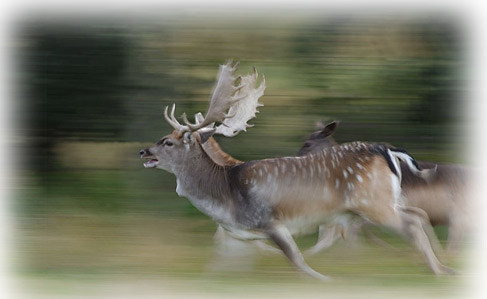Aim

The aim of this guide is to provide those who have been authorised by SNH to drive deer with a vehicle, with guidance.
- Ensure that where deer are intended to be driven using vehicles, all personnel involved in the activity understand and have the ability to follow this guidance.
Use of Vehicles
To drive deer by vehicle, on any land, for the purposes of taking or killing them, requires written authorisation from Scottish Natural Heritage1.
SNH may authorise a land owner or any person nominated in writing by the owner, to use a vehicle (excluding aircraft or hovercraft) to move deer for culling associated with management2.
Any person issued with an authorisation to move deer with a vehicle must comply with a ‘Code of Practice’, prepared and published by Scottish Natural Heritage in pursuance of Section 37(5) (b) of the Deer (Scotland) Act 1996. Failure to do so can result in 3 months imprisonment.
Deer moving away from vehicles will not be considered to be driven where, after their initial reaction, their speed or direction of movement is not dictated by the presence of the vehicle, and the deer are not pursued.
Do I need an authorisation?
- Deer may be moved for the purpose of killing or taking with the aid of a vehicle without licence if they will not be driven.
- Deer may be driven with the aid of a vehicle without authorisation if there is no intention for them to be taken or killed. For example deer can be moved in order to count them, clear them from an area where they are causing damage or pose a threat to safety.
- Once vehicles are used to shepherd deer with the intention to immediately take or kill them, then they are considered to be driven.
Likely Aims of Driving Deer with Vehicles
- To ensure the safety of a culling operation, e.g. where deer to be culled are in an area without safe backdrops.
- To improve efficiency of a deer management operation e.g. for counting, where visibility is reduced; for culling, where visibility prevents stalker/s approaching unseen; or where extraction is difficult due to terrain.
- To minimise disturbance to livestock and the public, as a result of culling operations.
- To protect a vulnerable crop.
Planning
- Recognise that deer prefer to move into the wind and make use of local knowledge to help predict the direction that the deer are likely to move.
- Compare predicted route with the desired direction of movement and position operators as appropriate.
- Ensure that operators are clear on how they will respond to different reactions from the deer.
- Ensure that there are clear lines of communication with one person responsible for directing operations and abandoning the operation if it is not running to plan.
- Ensure a written assessment of welfare implications to inform the decision to undertake the procedure*.
- Advise neighbours of the proposals if deer are likely to be moved onto their land.
Procedure
- Remain at a distance that allows deer to move at their own pace and ensure that family groups are not broken up.
- Try to keep the deer moving slowly — if they break into a gallop slow down.
- Never chase deer with a view to ‘heading them off’.
- Never drive deer to exhaustion, demonstrated by heavily laboured breathing, tongues hanging out and/or collapse.
- Set a clear limit on distance and time they will be driven for.
- Avoid driving calf/hind groups, between May-Aug.
- Avoid driving deer across stock fences when calves are younger than 4 months.
- Always work with the natural inclination of the deer, driving deer towards obstacles that may make them panic or double back causes problems (e.g. fence lines, busy roads, cliffs etc).
- Carry a first aid kit and portable communication equipment.
- Vehicles must be designed for use on the terrain covered and comply with Health & Safety legislation.
- Operators must be competent in the use of the vehicle/s used.
